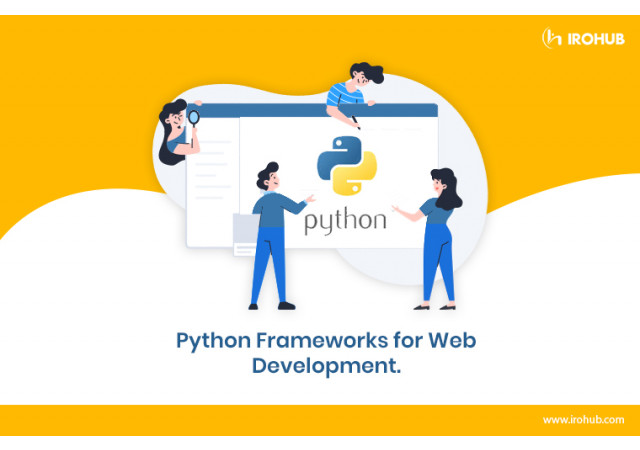Python is on an amazing higher movement. And, the market is certain to continue with no sign of deadening anytime shortly. Python is anticipated to overhaul Java and C# in the following years, which is a definite indication of a lot more to get. Many of today’s great tech companies such as Google, Netflix, Instagram, etc. are choosing Python frameworks for web development.
Recommended Python frameworks to Use in 2020
Noted below are the successful Python frameworks for web development that developers should take in 2020 for improving website performance.
Django
Django is a free and open-source Python framework, that allows developers to generate complex code and apps instantly. Django framework helps to develop class web applications. It is broadly used for the expeditious development of APIs and web applications. It has a large collection of libraries and underscores effectiveness, lesser need for coding, and reusability of elements.
Grok
It is a web framework based on something called Zope toolkit technology. It gives an active development exposure to developers by centering on two common principles. Firstly, convention over the arrangement and secondly, DRY (Don’t Repeat Yourself). It is an open-source framework, developed to hurry up the application development process time required. Developers can take from a wide field of network and independent libraries as designated by the task requirements. Grok’s UI (user interface) is like other full-stack frameworks similar to that of Pylons and TurboGears.
TurboGears
TurboGears is a Python framework that is designed to defeat the shortcomings of many widely used web and mobile app development frameworks. It allows software engineers to start developing web applications with an irrelevant setup. TurboGears lets web developers streamline web application development employing various JavaScript development tools. You can generate web applications with the guidance of elements such as SQLAlchemy, Repoze, etc. It holds various databases and web servers like Pylons.
Web2Py
Web2py follows a debugger, code editor as well as a deployment tool to empower you to create and debug the code, as well as test and save up the web applications. It’s a cross-platform framework that underpins Windows, Unix/Linux, Mac, Google App Engine, and various other platforms. The framework streamlines the web application development method via a web server, SQL database, etc. It empowers clients to build, edit, deploy, and manage web applications.
Flask
Flask is a Python framework prepared under the BSD license, which is encouraged by the Sinatra Ruby framework. Flask relies upon the Werkzeug WSGI toolbox and Jinja2 template. The main objective is to assist develop a strong web application support. Developers can improve backend frameworks any means they require, however, it was meant for applications that are open-ended. Flask has been adopted by big companies, which involve LinkedIn and Pinterest.
Bottle
Another exceptional Python web framework is Bottle. It falls under the category of small-scale frameworks. It was produced for building web APIs. Also, Bottle attempts to execute everything in a single source document. It has no other provinces than Python Standard Library. The out-of-the-box functionalities combine templating utilities, directing, and some basic abstraction over the WSGI standard. The bottle allows developers to operate closer to the hardware. It not only makes naive personal-use apps but an appropriate place for studying frameworks and prototyping. For example, Bottle has been adopted by Netflix as its web interfaces.
BlueBream
BlueBream is an open-source web application framework, server, and library for website developers developed by the Zope team. It was previously known as Zope 3 and is best befitted for both medium and abundant activities distributed into various re-usable and well-suited segments. BlueBream relies upon Zoop Toolkit (ZTK) and holds unrestricted periods of practice ensuring that it joins the main essential for permanent, constant, and flexible programming.
Quixote
Quixote framework is used for writing Web-based applications with Python. Its goals are flexibility and more reliable performance, in a definite order. Quixote applications are produced in traditional technology. Thus, if a Python developer is enthusiastic to seek or study the ‘real programming language’, then Quixote is for them. The thesis for formatting web pages contains Python classes and functions. There are three notable versions of Quixote- Versions 1 and 2 that match each other but are pretty different. Version 1 is no longer supported effectively. Version 3 needs Python 3, like Quixote 2. Versions 2 and 3 are kept up and are used by different public sites.
Bottom Line
Though various Python web development frameworks are popular and in-demand in the advancing years but disagree with its pros and cons. Every Python developer has various coding styles and inclinations. They will evaluate every framework as per the requirements of a particular task. Henceforth, the selection depends extremely on the developer and the job at hand. Learn Python from the Python training in kochi in Kochi at iROHUB Infotech for a better future.








Post Comments (0)